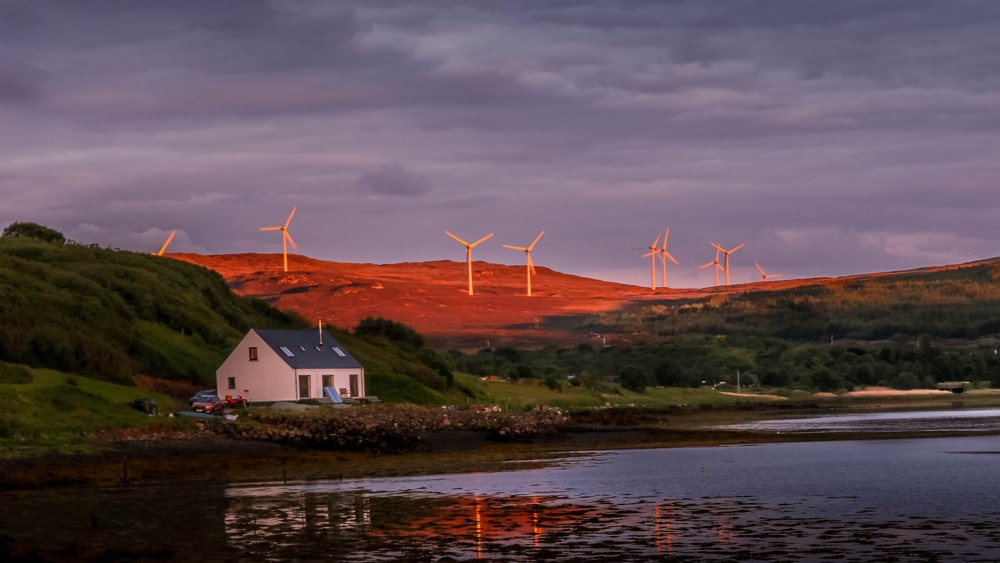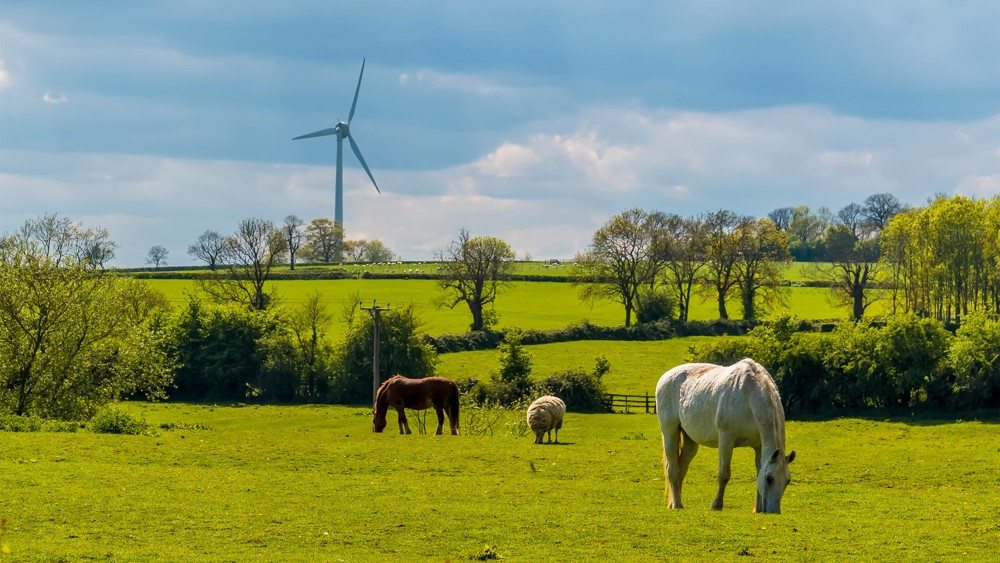Sam Sheppard, Senior Communications and Campaigns Manager
30/07/2025 | Onshore wind



Do wind farms impact tourism?
30 July 2025
Wind energy is expanding across the UK and providing an increasing amount of the country’s power, including a record 29.5% of our electricity in 2024. You can find wind farms across all regions of the country and they provide high quality jobs throughout their lifecycle, in addition to local community benefits. However, concerns can arise about their potential impact on tourism.
Fortunately, this is an area that has been meaningfully examined, particularly in the last 15 years. So we’ve looked at studies and visitor trends from England, Scotland, Wales, and Ireland to see what the data tells us and if the development of wind energy actually puts off tourists.
Scotland
Looking first at Scotland, which hosts the lion’s share of onshore wind in the UK and has seen a significant increase in onshore capacity since 2009, BiGGAR Economics conducted analysis of 44 wind farm case studies and found ‘no evidence of a link between wind farm development and trends in tourism employment’ between 2009 and 2019. In fact, employment in tourism-related sectors in Scotland actually grew by 20% during this period.
The research and policy centre ClimateXChange drew the same conclusions, with a 2012 survey of tourists’ attitudes to wind farms revealing that 80% of UK respondents, and 83% of Scottish respondents said their decision on where to visit or where to stay would not be affected by the presence of a wind farm. Furthermore, only a small minority (19%) of respondents agreed with the sentiment that wind farms spoil the look of the countryside.

The 2008 Moffat report, commissioned by the Scottish Government, also looked at whether Government priorities for wind farms were likely to have an economic impact on Scottish tourism. It concluded that ‘overall there is no evidence to suggest a serious negative impact of wind farms on tourism’, and noted that over time hostility to wind farms lessens and they become an accepted and even valued part of the scenery.
In fact, recent examples show developers actively working with communities to boost tourism in Scotland, by using community benefit funds (CBFs) to fund initiatives like the restoration of the John o’ Groats trail, which attracts in the region of 1,000 walkers to the north coast of Scotland each year. Whilst Whitelee, Scotland’s largest onshore wind farm located on Eaglesham Moor near Glasgow, has become a bona fide tourist attraction with over one million visitors since it opened in 2009. It offers interactive exhibits and educational materials at its visitor centre, as well as a range of outdoor pursuits from hiking to horse riding across its 130 kilometres of trails.
England
Moving south of the border to England, we see a similar pattern emerge. A 2014 study conducted by Northumbria University evaluated whether wind farms negatively affect tourism in rural areas of North East England. It found that only 11% of tourists would avoid returning to an area due to the presence of wind farms, and 61% believed correctly sited turbines didn’t harm the landscape. The concerns of local residents over a loss of tourism were not mirrored by the sentiments of visitors, with 63% of tourism businesses reporting no negative impact, and the actual number of tourists visiting Northumberland steadily increasing year upon year from 2014 through to 2020.

Within the region, we can see direct examples of the industry supporting and boosting tourism. Delivered in partnership with the Northumberland Community Foundation, the historic Cresswell Pele Tower saw increased visitor numbers between June 2023 and September 2024 thanks to support from Nadara’s Sisters and North Steads Wind Farms Community Benefit Fund. This funding enabled a pilot arts project, which brought in local artists to host a programme of creative workshops, heritage sessions, and public events to engage families, celebrate local history, and attract new visitors.
Turning to offshore wind, we can actually see a positive boost in terms of tourism. The Rampion wind farm, located around eight miles off the Sussex coast, sparked local concern when it was first licensed in 2010. However, since opening in 2018, it has mirrored Whitelee to become a tourist attraction with companies running regular boat trips out to the site for visitors to get a closer look. We also saw a similar phenomenon at Scroby Sands, near Great Yarmouth, which hosted a visitor centre after opening in 2004 that attracted as many as 35,000 people a year!
Wales and Ireland
Looking next at Wales, a 2014 report from the Welsh Government concluded that Wales’s key tourism areas and visitor assets are, for the most part, ‘unlikely to be affected by wind farm developments’. It also noted that, although individuals vary widely in their reaction to wind farms, a clear majority do not react negatively to them and will not change their destination choice on account of their presence.
Wales’ largest offshore wind farm, Gwynt y Môr even delivered a one-off tourism fund during its construction, equating to £690,000 investment across multiple areas of the country’s north coast. These included major improvements to the Victorian pier at Llandudno, replacement of the slipway onto Llandudno Beach, and investment in the re-development of Rhyl Harbour.

Zooming out slightly and looking across the Irish Sea, we see an even more positive picture. Ireland’s national tourism development authority, Fáilte Ireland, conducted a 2012 study to assess visitor attitudes towards wind farms. It found that 48% of visitors said viewing a wind farm had no impact on their visit, while 32% reported a positive impact. In total, 71% of visitors stated that potentially greater numbers of wind farms over the next few years would not negatively impact their likelihood of visiting the country.
In conclusion
The studies cited paint a clear picture of rural areas experiencing little to no negative impact on tourism from the development of onshore or offshore wind farms. Only a small number of potential visitors are deterred by them, and we have actually seen a boost in many regions over the last decade, as well as a growing subgenre of eco-tourism stemming from greater public understanding and desire to learn more about sustainability and net zero.
Public surveys, regional employment data, and visitor trends all support the conclusion that fears of tourism decline due to wind farms are largely unfounded. However, it is important to note that the concerns of local residents are taken extremely seriously by developers, which helps amplify positive tourism outcomes, and the UK's planning system is strict when it comes to the visual and environmental impact of wind farms.
Wind energy also directly supports both nature and local communities throughout the country, utilising a range of initiatives such as CBFs for those closest to onshore wind farms, local electricity discount schemes, and local or shared ownership models. Taking community benefits alone, RenewableUK estimates that more than £550 million has been locally invested through CBFs since 2015, and this figure is expected to rise to £150 million annually if Government ambitions to 2030 are met.



